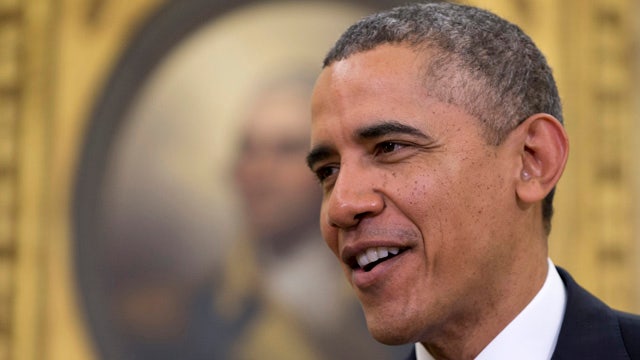Critics challenge White House's ObamaCare enrollment figures
Will Americans end up paying more for health care?
A major new Gallup survey suggests the ObamaCare sign-up numbers are not as soaring as the White House claims.
The massive survey, released on Monday, shows the number of uninsured indeed has fallen to its lowest level in years, likely thanks to the Affordable Care Act. The Gallup-Healthways Well-Being Index measured the share of adults without health insurance. That shrank from 17.1 percent at the end of last year to 15.6 percent for the first three months of 2014.
The decline of 1.5 percentage points would translate roughly to more than 3.5 million people gaining coverage.
But the numbers, released a week after the close of the health law's first enrollment season, also suggest a far more modest impact on coverage than statistics cited by the Obama administration.
The administration says 7.1 million have signed up for subsidized private plans through new insurance markets, while 3 million previously uninsured people gained coverage through the law's Medicaid expansion.
Why the huge difference? For starters, the administration's numbers include people who switched or were dropped from their previous coverage, as well as people who have not paid their first month's premium, and who would therefore still be uninsured.
The administration is also counting sign-ups dating back to October, though enrollment in the first few months was relatively low.
According to Gallup, the number of uninsured has fallen by a greater amount since the start of open enrollment on Oct. 1. Gallup shows the percentage spiked to 18 percent at the end of the third quarter. But the spike could be attributed in part to people being kicked off their prior coverage, due to changes in the health care law. A look back at mid-2013 shows the percentage of uninsured, before the run-up to open enrollment, was also at 17.1 percent. So the number of people gaining coverage since then would still be roughly 3.5 million.
Still, it's not quite an apples-to-apples comparison. Gallup is counting just adults, while the administration figures include children as well.
It may take much of the rest of the year to get a true bottom line of the health care law's impact on coverage. The Gallup survey noted that those signing up for coverage during an extended enrollment period could further drive down the number -- though some enrollees will ultimately choose not to pay their premiums, which would drive the number up.
But Gallup's numbers do show an improving trend. The share of Americans without coverage is at its lowest since late 2008, before Obama took office, the survey found.
That's independent validation for the White House, and shows the country at least is not suffering from a net loss of insurance coverage due to cancellations.
Some feared the cancellations of more than 4.7 million policies that didn't measure up to the law's standards would actually swell the ranks of uninsured people. That created huge political problems for Obama, who had promised Americans they could keep their insurance if they liked it.
About half the states authorized extensions belatedly granted by the White House.
Gallup found the biggest insurance gains were among lower-income people and among African-Americans.
Among people with household incomes of less than $36,000 a year, the share of uninsured shrank by 3.2 percentage points from levels at the end of 2013.
African-Americans saw their uninsured rate drop by 3.3 percentage points.
Although the proportion of Hispanics without coverage fell by 1.7 percentage points, Latinos remained more likely than any racial or ethnic group to lack access, with 37 percent uninsured.
Gallup found gains in coverage among all age groups, but not much evidence of a late surge of younger people that the administration had hoped for to help keep premiums in check.
Results were based on telephone interviews conducted Jan. 2 -- March 31 with a random sample of 43,562 adults 18 and older living in all 50 states and Washington, D.C. For results based on the total sample of national adults, the margin of sampling error is plus or minus 1 percentage point at the 95 percent confidence level.
The Associated Press contributed to this report.





